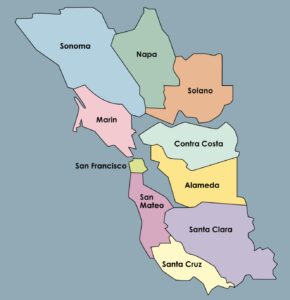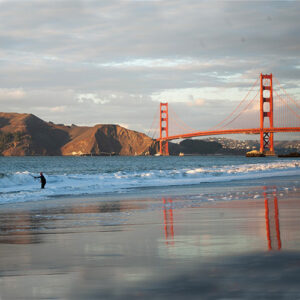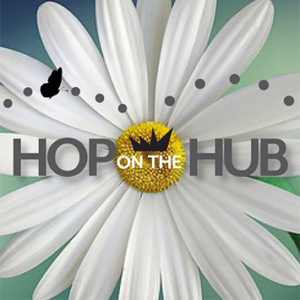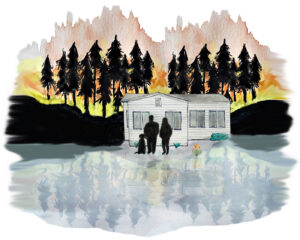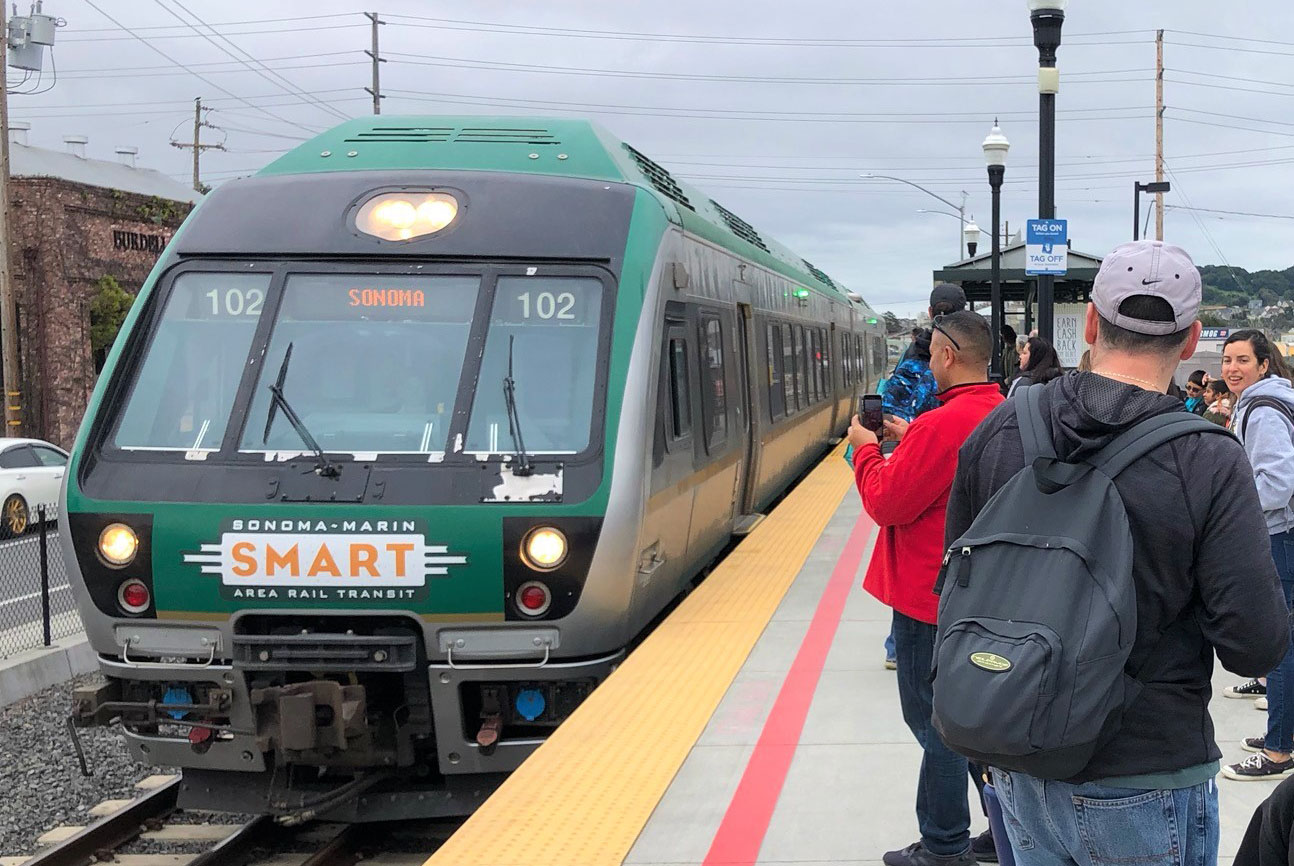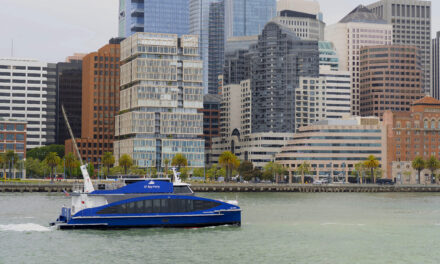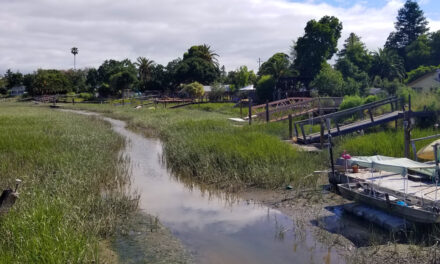Rail Line Reinvents Itself After Pandemic Slump
Photo: SMART
The Sonoma-Marin Area Rail Transit (SMART) system, which runs from Larkspur to the Sonoma County Airport, had a banner year in 2023. The rail transported over 750,000 passengers in 2023 and earned over half a million dollars in fare revenue, beating its 2018 pre-pandemic numbers.
“Since the pandemic, it’s been very challenging for transit agencies to recover from work from home patterns,” says Julia Gonzalez, who works for SMART’s marketing team. “But because we’re a small, agile agency, we’ve been able to experiment with new programs to try and diversify our ridership.”
While there are fewer commuters during peak hours, SMART has pivoted towards helping North Bay residents run midday errands, plan weekend hiking trips, and leave their cars behind. Gonzalez notes that Sonoma’s bike culture has a lot to do with it. The agency removed seats to create more bike-friendly carriages, and now about 15% of SMART’s ridership brings bicycles on the train. “Our bike pathway runs alongside the rail alignment, separate from traffic, and allows people to finish the first and last mile of their trips” she explains. In addition, the agency is offering free rides to all youth passengers until July 2025 to encourage them to use the service to commute to and from school.
Photo: SMART
Gonzalez hopes that diversifying its ridership will act as a boon for eco-conscious public transit advocates. According to a SMART fact sheet, SMART riders have a 33% smaller carbon footprint than their car-bound counterparts; from 2017 to 2020, they collectively prevented 8.1 million pounds of carbon dioxide emissions. “Our community really does prioritize protecting our green space and limiting our impact on climate change. In 2008, North Bay voters approved a quarter-cent sales tax measure to fund SMART, and that tax revenue is our largest source of revenue,” says Gonzalez.
Though the tax expires in 2029 – a proposed 30-year extension failed to capture the requisite supermajority vote on the 2020 ballot – SMART continues to seek grant funding to extend its railway through Windsor, Healdsburg, and Cloversdale. “We took almost 16 million vehicle miles off the road last year,” boasts Gonzalez. “If our ridership continues to grow, we can use the data to prove that public transit is a truly sustainable alternative to individual car use.”
Other Recent Posts
Learning the Art of Burning to Prevent Wildfire
In Santa Rosa’s Pepperwood Preserve, volunteers are learning how controlled fires can clear out natural wildfire fuel before it can spark.
Martinez Residents Want More Than Apologies — They Want Protection
After a 2022 release of toxic dust and a February 2025 fire, people in the northeast Bay town are tired of waiting for safety improvements.
Weaving Fire Protection Out Of What’s Already There
A new Greenbelt Alliance report shows how existing vineyards, grasslands, and managed forests can slow wildfire and save vulnerable homes.
Fall Plantings Build Pollinator Habitats in Concord
Community groups, climate advocates and a church are coming together to plant pollinator gardens as monarchs, bees see population declines.
Newark Needs Housing, But Could Shoreline Serve A Higher Purpose?
The Bay Area needs more affordable housing, but would 196-homes or a buffer against sea level serve local needs better in the years ahead?
Who Will Inherit the Estuary? Training for a Rough Future
The six-month program teaches students aged 17 -24 about the challenges facing communities around the SF Estuary, from Stockton to East Palo Alto.
Split Verdict Over State of the Estuary
Habitat restoration and pollution regulations are holding the Bay steady, but the Delta is losing some of its ecological diversity, says SF Estuary Partnership scorecard.
Volunteers Catch and Release Tiny Owls For Science
In Santa Rosa, citizen scientists capture northern saw-whet owls to help further research on climate impacts to the bird.
Antioch Desalination Plant Could Boost Local Water Supply
The $120 million plant opened this fall and treats 8 million gallons of brackish water a day, 75% of which is drinkable.
How Cities Can Make AI Infrastructure Green
Data centers fueling AI can suck up massive amounts of energy, water and land, but local policies can mitigate the impact.

